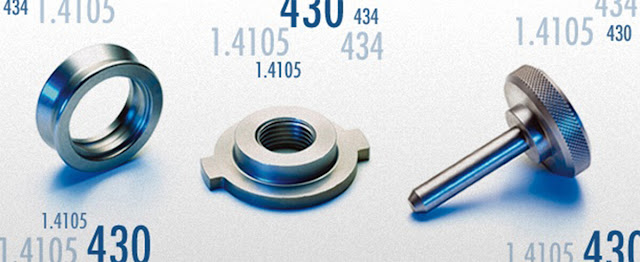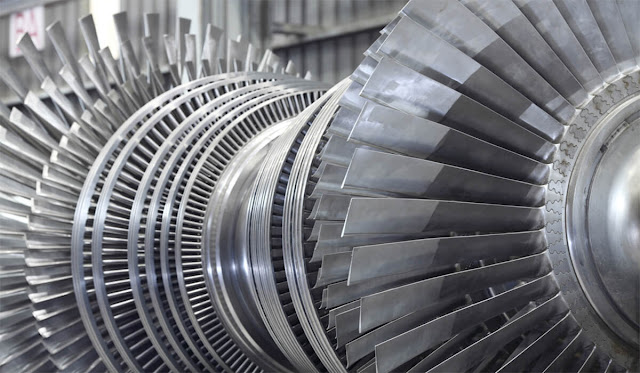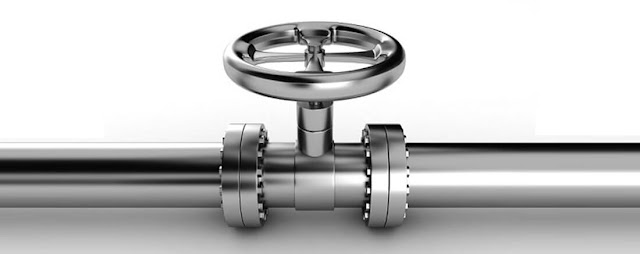Stainless steel grades include carbon (less
than 1.2%), iron, chromium (10.5% - 30%), molybdenum, nickel (at least 8 %) and
different alloying elements. It is a famous steel utilized in diverse products,
tools, gadget, and systems that serve in lots of industrial, commercial, and
home applications.
Corrosion resistance is the maximum
treasured belongings of stainless metallic. Chromium is the alloying detail
accountable for corrosion resistance. This detail reacts with oxygen in air and
water and bureaucracy a thin, solid chromium oxide movie shielding the
underlying steel surface. Molybdenum complements corrosion resistance with the
aid of using shielding the movie from pit formation. The shielding layer is
regenerated after moderate abrasions. However, rust can nevertheless be
fashioned while the layer is seriously broken after publicity to chlorides,
sturdy cleansing agents, environments with excessive salinity and excessive
humidity, and after excessive abrasion.
Aside from corrosion resistance,
stainless steels are recognized for his or her outstanding mechanical
residences which include excessive strength, toughness, ductility, fatigue
strength, and put on resistance. Stainless steels can face up to excessive
temperatures, excessive pressures, and cryogenic environments. They are
non-reactive to maximum chemical substances; hence, they're typically utilized
in chemical dealing with gadget and vessels. They additionally have an
aesthetically pleasing, lustrous, and vivid surface.
Types of Stainless Steel Grades
Austenitic
Stainless Steels
Austenitic stainless steel is the maximum not unusual place sort of stainless-steel. It is called after an English metallurgist named Sir William Chandler Roberts-Austen. It is the maximum broadly used class of stainless-steel, which contains the two hundred and three hundred series.
.jpg) |
| Austenitic Stainless Steels |
Ferritic
Stainless Steels
 |
| Ferritic Stainless Steels |
Martensitic
Stainless Steels
Martensitic stainless steel has a tetragonal body-centered crystal structure. They are composed of 11.518% chromium and 0.11.2 µr bon. The relatively high strength and brittleness of martensitic stainless steels is due to their high carbon content. However, martensitic stainless steel contains almost no nickel, so its corrosion resistance is low. Martensitic stainless steels are classified into two types, low carbon (0.050.25 carbon) martensitic steel and high carbon (0.611.50 carbon) martensitic steel, based on their carbon content. Low carbon martensitic steels provide better corrosion resistance, while high carbon martensitic steels have higher strength and are more brittle.
Martensitic stainless steel can be improved by heat treatment processes such as hardening, annealing, quenching and tempering. Martensitic stainless steel is magnetic and impact resistant. However, it is fragile and difficult to weld and mold.
 |
| Martensitic Stainless Steels |
Duplex
Stainless Steels
Duplex stainless steel contains approximately equal proportions of both austenite and ferrite phases in its microstructure. They are twice as strong as regular austenitic and ferritic stainless steels. Their toughness, ductility and formability are superior to ferritic steels, but they do not reach the levels of austenitic steels. Duplex stainless steel has excellent resistance to stress corrosion cracking from the ferrite side. Since this property depends on the composition, the corrosion resistance of duplex stainless steels varies greatly. Increasing the content of nickel, molybdenum, and nitrogen increases resistance to pitting and crevice corrosion. In terms of cost, duplex stainless steel continues to be a cheaper alternative to austenitic stainless steel.
 |
| Duplex Stainless Steel |
Precipitation-Hardened
Stainless Steels
Precipitation hardening stainless steel (PH steels) contains small amounts of copper, aluminum, titanium, and
molybdenum. After the elements of
stainless steel are alloyed, the stainless steel is aged to precipitate these elements
as hard intermetallic compound elements. The precipitated phase impedes the
movement of dislocations, which is a defect in the crystal lattice structure,
and gives stainless steel excellent strength and hardness. PH stainless steel
has corrosion resistance comparable to that of austenitic stainless steel.
PH stainless
steels are classified into three types: martensitic, austenitic, and
semi-austenitic PH stainless steels. Austenitic PH steel retains its crystal
structure at all temperatures. Semi-austenitic PH steels remain austenitic after
solution heat treatment and quenching. The austenite structure transforms into
martensite after cryogenic or cold
working.
 |
| PH Stainless Steel |


0 Comments